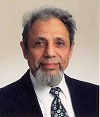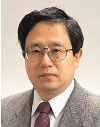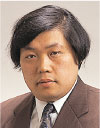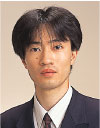|
|
 |
|
|
Center for Mathematical Science |

Hiroyuki Sagawa
Professor |

Noriaki Kamiya
Professor |

Issai Kantor
Visiting Professor |

Katsutaro Shimizu
Associate Professor |

Ken-ichi Funahashi
Associate Professor |

Toshiro Watanabe
Assistant Professor |

Kazuto Asai
Assistant Professor |

Michio Honma
Assistant Professor |

Shigeru Watanabe
Assistant Professor |

Hiroshi Kihara
Assistant Professor |
|
The scope of activities of the Center for Mathematical Sciences spans all aspects of research and education in the fields of mathematical sciences. Our current researches in the field of mathematics are devoted to various subjects and problems Centers arising in both pure and applied mathematics: non-associative algebras, neural networks, unimodality problems, algebraic combinatorics, spherical functions, and homotopy theory.
In the fields of physics, theoretical research is performedinmany-body theories, nuclear physics, quantum gravity and quantum mechanics of constrain system. There has been also a project to develop educational textbooks and software for mechanics, electromagnetism and quantum mechanics. The research areas assigned to each co-researcher are as follows:
| Prof. N. Kamiya | studies the theory of non-associative algebras and a structure theory of algebras from triple systems |
| Prof. H. Sagawa | studies the physics of the many-body system of including nuclei and microclusters |
| Prof. K. Funahashi | researches the theory of the neural networks and function theory of several complex variables from a geometrical viewpoint |
| Prof. K. Shimizu | advances the traditional quantum theory and creates the geometrical theory of quantum gravity |
| Prof. T. Watanabe | generalizes the unimodality problems of 1-dimensional infinitely divisible distributions to multi-dimensional cases in the use of analytical methods |
| Prof. K. Asai | researches combinatorial identities for generalized Young tableaux, and also, several generating functions arising from algebraic combinatorics |
| Prof. S. Watanabe | studies geometrical interpretations of generating functions for spherical functions on homogeneous spaces |
| Prof. M. Honma | researches the microscopic structures and dynamics of the nuclei by the algebraic methods and geometrical models performing the quantitative analysis by the large-scale numeric calculations |
| Prof. H. Kihara | studies homotopy theory and its applications to various areas of mathematics |
|
| [k-asai-001:2001] | Kazuto Asai. Taylor expansion of implicit functions defined by linear equations of variables. Kodai Mathematical Journal, 24(1):31-35, 2001. |
| [kamiya-001:2001] | N.Kamiya. Examples Peirce decompositin associated with simple generalized Jordan triple systems of second order. Bull. Polish Acad.Math., 49(2):159-175, 2001.
We study a continue of Published papers (1997, Comm. in Alg). |
| [kamiya-002:2001] | N. Kamiya and S. Okubo. A construction of simple Jordan super algebra of F type from a Jordan-Lie triple systems. Annali i Mathematica pure ed Applicata, 181:339-348, 2002.
In this paper,we investigate a construction of simple Jordan supergebras from triple systems. This article is a continue of published paper(1997, Journal Algebras) |
| [kamiya-003:2001] | N. Kamiya. On radicals of triple systems. Proceeding International Workshop,in press,Kluwer Acad.Pub., 2002.
In this paper,we investigate the radical of triple systems,in particular, solv. nilpotent radicals |
| [kamiya-004:2001] | N. Kamiya and S. Okubo. Quasi-classical Lie super algebras and Lie super triple systems. Comm in Algebras, in press, Marchal Dekker Pub., 2002.
In this paper,we investigate a construction characterization of semi-simple Lie triple systems. systems. |
| [kamiya-005:2001] | N. and Okubo. S Kamiya. Construction of Lie super algebras D(2,1;k), G(3) and F(4) from some triple systems. Proc.Edinburgh Math.Soc..in press,, pages 159-175, 2002.
In this paper,We study a comstruction of simple Lie super algebras from our triple systems |
| [m-honma-001:2001] | Yutaka Utsuno, Takaharu Otsuka, Takahiro Mizusaki, and Michio Honma. Extreme location of F drip line and disappearance of the N = 20 magic structure. Physical Review C, 64:011301(R)/1-5, 2001.
The drip line ofFisotopes is discussed from the view point of a unified description of exotic nuclei with N??20. The structure of those nuclei is described by means of large-scale shell model calculations, most of which areMonte Carlo shell model. It is shown that, due to the narrowing of the N=20 shell gap towards smaller Z, the mixing among normal, intruder, and higher intruder configurations can be enhanced signi??cantly, and can produce crucial effects, including the F drip line located extremely far from the O drip line. The feasibility of Monte Carlo shell model is demonstrated for systems with an odd number of fermions. |
| [m-honma-002:2001] | Takaharu Otsuka, Rintaro Fujimoto, Yutaka Utsuno, B. Alex Brown, Michio Honma, , and Takahiro Mizusaki. Magic Numbers in Exotic Nuclei and Spin-Isospin Properties of the NN Interaction. Physical Review Letters, 87:082502/1-4, 2001.
The magic numbers in exotic nuclei are discussed, and their novel origin is shown to be the spin-isospin dependent part of the nucleon-nucleon interaction in nuclei. The importance and robustness of this mechanism is shown in terms of meson exchange, G-matrix, and QCD theories. In neutron-rich exotic nuclei, magic numbers such as N=8, 20, etc. can disappear, while N=6, 16, etc arise, a??ecting the structure of the lightest exotic nuclei to nucleosynthesis of heavy elements. |
| [m-honma-003:2001] | Takaharu Otsuka, Michio Honma, Takahiro Mizusaki, Noritaka Shimizu,andYutakaUtsuno. Monte CarloShellModel foratomic nuclei. Progress of Particle and Nuclear Physics, 47:319-400, 2001.
The development, present status and future perspectives of the Monte Carlo shell model are discussed. |
| [sagawa-001:2001] | H. Sagawa and S. Yoshida. New spin-orbit intereactions in Skyrme forces. Nuclear Physics A, 688:755-764, 2001.
We study New spin-orbit intereactions in Skyrme forces |
| [sagawa-002:2001] | H. Sagawa, T. Suzuki, H. Iwasaki, andM. Ishihara. Low energy dipole strenth in light drip line nuclei. Phys. Rev. C, 63:034310-1, 034310-8, 2001.
We study Low energy dipole strenth in light drip line nuclei |
| [sagawa-003:2001] | K. Matsuta, T. Miyake, H. Sagawa, and T. Minamizono et al. Electromagnetic moments of the ????emitting nucleus N. Phys. Rev. Lett., 86:3735{3738, 2001.
We study Electromagnetic moments of the ????emitting nucleus |
| [sagawa-004:2001] | H. Sagawa and H. Esbensen. Giant Resonances in Drip Line Nuclei. Nucl. Phys. A, 693:448-462, 2001.
We study Giant Resonances in Drip Line Nuclei |
| [sagawa-005:2001] | H. Sagawa and K. Asahi. N/Z dependence of Core Polarization Charges in Drip Line Nuclei. Phys. Rev. C, 63:064310-1, 2001.
We study N/Z dependence of Core Polarization Charges in Drip Line Nuclei |
| [sagawa-006:2001] | Toshio Suzuki G. Col??o and H. Sagawa. Particle-vibration coupling and shell structure of exotic nuclei. Nucl. Phys., A695:167-176, 2001.
We study Particle-vibration coupling and shell structure of exotic nuclei |
| [sagawa-007:2001] | I. Hamamoto, H. Sagawa, and X. Z. Zhang. Shape, shell structure, and low-lying strong octupole strength in Ca. Phys. Rev., C64:024313 1-6, 2001.
We study Shape, shell structure, and low-lying strong octupole strength in 60 Ca |
| [sagawa-008:2001] | K. Hagino and H. Sagawa. Continuum QRPA in the coordinate space representation. Nucl. Phys., A695:82-94, 2001.
We study ContinuumQRPA in the coordinate space representation |
| [sagawa-009:2001] | H. Sagawa. Giant Multipole States in Stable and Unstable Nuclei. Prog. Theor. Phys. Supplement, 142:1-34, 2001.
We study Giant Multipole States in Stable and Unstable Nuclei |
| [t-watanb-001:2001] | T.Watanabe. Shift Self-Similar Additive Random Sequences Associated with Supercritical Branching Processes. Journal of Theoret. Probab., 2002.
accepted |
| Referred Proceeding Papers |
| [sagawa-010:2001] | T. Suzuki and H. Sagawa. Low-energy dipolemodes in unstable nuclei. In Progress in Particle and Nuclear Physics 46, pages 21-40, 2001.
We review Low-energy dipole modes in unstable nuclei. |
| [sagawa-011:2001] | H. Sagawa. NEW STRUCTURE PROBLEMS IN DRIP LINE NUCLEI. In Proc. of 4th Italy-Japan Symposium on Heavy Ion Physics, pages 21-40, 2001.
We review NEW STRUCTURE PROBLEMS IN DRIP LINE NUCLEI. |
| [sagawa-012:2001] | H. Sagawa, G. Colo, and T. Suzuki. Dynamical Effects beyond Mean Field in Drip Line Nuclei. In Proc. of Yukawa International Seminar 2001 (YKIS01), pages 21-40, 2001.
We review Dynamical E??ects beyond Mean Field in Drip Line Nuclei. |
| [sagawa-013:2001] | H. Sagawa. GIANT RESONANCES IN NUCLEINEAR AND FAR FROM STABILITY LINE. In Proc. of International Symposium on Electromagnetic Interactions (EMI) 2001, pages 21-40, 2001.
We review GIANT RESONANCES IN NUCLEI NEAR AND FAR FROM STABILITY LINE. |
| [funahasi-002:2001] | K. Funahashi. Approximation of dynamical systems by recurrent neural networks. In H. Kawarada R. Glowinski and Editor J. Periaux, editors, Computational Methods for Control Applications (GAKUTO International Series, Mathematical Sciences and Applications, Vol 16 (2001)), pages 27-37. GAKKOTOSHO CO., LTD, 2001. |
| [kamiya-006:2001] | N. kamiya. triple systems, pages 163-164, 34-35. Encyclopaedia Mathematics. Kluwer Academic Pub., New York, 2001. |
| [kamiya-007:2001] | N. Kamiya. On triple systems, Ministry of Education Grantin-Aid: Scientific Research, No. 10640024, 2001. |
| [sagawa-014:2001] | H. Sagawa. A study of structure of unstable nuclei by linear response theory with continuum Ministry of Education Grant-in-Aid: Basic Research C(2), Contract No.12640284, 2000-2003. |
| [kihara-001:2001] | Member, Homotopical Algebra and Classi??cation of Fiber Spaces, Symposium on Homotopy Theory |
| [sagawa-015:2001] | Tasuku Murata. Graduation Thesis: Experimental quantum communications, University of Aizu, 2001.
Thesis Advisor: Hiroyuki Sagawa. |
| [sagawa-016:2001] | Daisuku Abe. Graduation Thesis: Quantum Teleportation by many entangled photons, University of Aizu, 2001.
Thesis Advisor: Hiroyuki Sagawa. |
| [sagawa-017:2001] | Akiyuki Maeda. Graduation Thesis: Quamtum cryptography and key distributions, University of Aizu, 2001.
Thesis Advisor: Hiroyuki Sagawa. |
| [sigeru-w-001:2001] | Koji Yoshida. Graduation Thesis: Statistical Methods in Public Opinion Survey, University of Aizu, 2001.
Thesis Advisor: Shigeru Watanabe. |
|